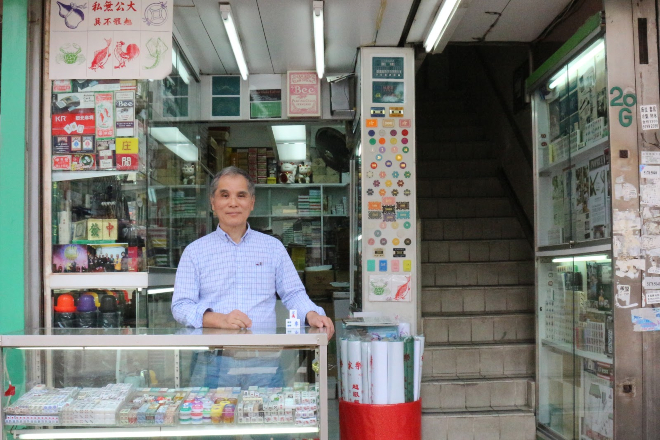By Localiiz
Branded | 17 May 2024
By Localiiz
Branded | 14 May 2024
Copyright © 2025 LOCALIIZ | All rights reserved
Subscribe to our weekly newsletter to get our top stories delivered straight to your inbox.
Mahjong, a tile-based game developed in China during the Qing dynasty, is a popular game played among Chinese communities. The distinctive sound of mahjong tiles clattering against each other on a wooden table—almost like large pebbles mixed in a bowl—can be recognised from a mile away. Each tile features different patterns and symbols that are traditionally engraved by hand. This particular form of art is so unique, it’s even listed as one of Hong Kong’s Intangible Cultural Heritages by the Government. We talk to one of Hong Kong’s last remaining mahjong tile masters to gives us the lowdown on this dying art.
One of the three remaining hand-carved mahjong tile masters left in Hong Kong, Cheung Shun King (fondly known as Uncle King), can be found swiftly and skilfully carving Chinese characters and patterns on mahjong tiles in his shop, Bui Kee Mahjong. Opened by his father in the 1960s, the shop went from being one of the many mahjong shops in the area to only one of a few.

At its peak in the 1970s, Uncle King used to receive three to five orders a day for mahjong sets. Now, as electronic mahjong tables that shuffle and arrange the tiles automatically rise in popularity, he only receives three to four orders a year. The core reason is that electronic mahjong tables use smaller, magnetic tiles, which are predominantly mass-produced in China. These sets sell for around only $200, so it’s no wonder that Uncle King’s $4,000 hand-carved sets find it so hard to compete. Another contribution to the decline of this industry is the introduction of other forms of entertainment. Uncle King recalls how everybody used to play mahjong because there was nothing else to play in the 1970s, but now there are video games, cinemas, and many other ways for people to spend their time.

In addition to the decline in demand, there is also a lack of suppliers for the tools and materials Uncle King needs. Many of the tools he uses are made by himself, including a light that is made from a tea leaf container. He shares that most of the suppliers he used to get his tiles from are no longer in operation, and even the paint he likes to use is no longer available. Plus, even with Uncle King’s skilled hands, it still takes about one week or so to finish a set of 144 tiles from start to finish. With low-profit margins, intense physical labour, and long hours, it’s no surprise that people aren’t rushing to get into this industry. If you want to learn more about the art of hand carving mahjong tiles, you can pay a visit to Uncle King’s shop, and support this dying heritage by ordering a set of tiles.
Bui Kee Mahjong, 235 Temple Street, Jordan | (+852) 2730 4028
Top